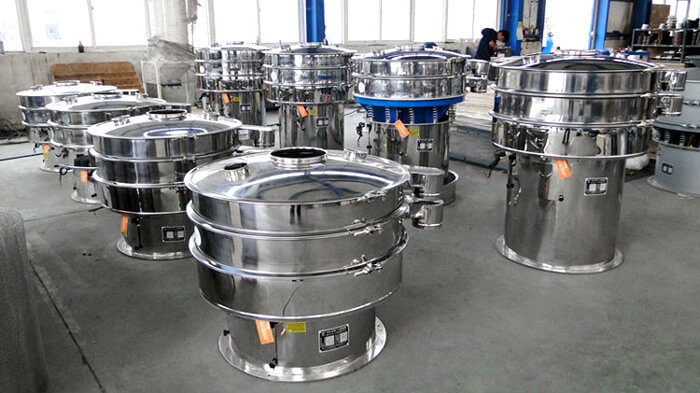1. Introduction: Screening — The Heart of Modern Aggregate Production
In the sand and aggregate industry, screening is one of the most critical steps in the entire production chain. Whether the end product is used for concrete, asphalt, road base, or specialty sand applications, achieving precise size separation determines the quality, value, and consistency of the final material.
Modern quarries face increasing pressure to deliver high volumes of clean, well-graded materials while maintaining cost-efficiency and meeting stringent quality standards. Traditional screening systems often struggle to keep up with rising throughput demands and variable feed materials.
This is where advanced vibrating screening equipment comes in. With their high capacity, adjustable parameters, and durable construction, these machines are revolutionizing sand and aggregate processing—helping operators reduce waste, maximize yield, and ensure consistent quality.
2. Industry Challenges in Sand & Aggregate Processing
Even with abundant raw materials, producers encounter several persistent challenges:
- 🪨 Inconsistent feed material — Variations in moisture, clay content, or particle shape can cause blinding or reduce screening efficiency.
- 🌧 Moisture-related clogging — Wet or sticky materials can plug screen openings, slowing production.
- ⚙️ High throughput demands — Modern quarries must handle large volumes continuously while minimizing downtime.
- 🧪 Tight product specifications — Infrastructure projects and ready-mix producers require precisely graded material with minimal contamination.
- 🏭 Wear and maintenance issues — Sand and aggregates are highly abrasive, accelerating screen deck wear and causing frequent replacements.
- 🌱 Environmental regulations — Dust, noise, and water usage are increasingly regulated, requiring more efficient and enclosed systems.
Meeting these challenges requires equipment that is robust, flexible, and technologically advanced, rather than relying on outdated static or manual screening methods.

3. The Role of Advanced Vibrating Screens in Production Efficiency
a. Accurate Size Classification
Vibrating screens ensure precise separation into multiple fractions (e.g., 0–5 mm, 5–10 mm, 10–20 mm), enabling producers to meet tight gradation requirements and produce several product sizes simultaneously. Multi-deck configurations allow for efficient classification in a compact footprint.
b. High Throughput and Continuous Operation
Modern linear and circular vibrating screens are designed for 24/7 operation under heavy loads. Their adjustable vibration parameters ensure stable throughput, even with fluctuating feed moisture or density.
c. Moisture and Blinding Control
Features like self-cleaning screen media, high-frequency vibration, or spray bars prevent material buildup, keeping the screens open and efficient during wet processing.
d. Low Maintenance & Long Service Life
Heavy-duty construction, wear-resistant screen panels (e.g., polyurethane, rubber), and easy-to-replace components significantly reduce unplanned downtime.
e. Environmental & Safety Compliance
Enclosed screening systems with dust suppression and noise-reducing designs help quarries meet local environmental standards while improving worker safety.
4. Key Applications in Sand & Aggregate Operations
| Screening Stage | Objective | Recommended Equipment Type |
|---|---|---|
| Primary Scalping | Remove oversized boulders, clay balls, or debris before crushing | Heavy-duty grizzly screen or scalper |
| Secondary Screening | Separate crushed material into usable fractions | Linear vibrating screen, multi-deck |
| Sand Dewatering & Desliming | Remove excess water and fines to produce clean, saleable sand | Dewatering vibrating screen, high-frequency |
| Final Product Grading | Achieve precise size fractions for sale and delivery | Multi-deck circular or linear screen |
| Recycle & By-Product Processing | Re-screen undersized or oversized material for re-crushing or blending | Secondary linear screen or fines recovery unit |
Integrating screening equipment at multiple points in the process ensures consistent product quality and maximizes overall plant efficiency.

5. Technological Innovations in Screening Equipment
Modern screening equipment has evolved significantly from the basic oscillating designs of the past. Key innovations include:
- Variable frequency drives (VFDs) that allow operators to fine-tune vibration speed and amplitude for different materials.
- Modular screen decks that make changing mesh sizes faster and more economical.
- High-frequency screens designed specifically for fine sand and slurry applications.
- Hybrid wet-dry screening systems for versatile operations in variable climates.
- Integrated monitoring systems with sensors to detect screen performance issues early.
- Wear-resistant materials (e.g., PU, rubber, ceramic) that extend equipment life and reduce maintenance frequency.
These advancements translate to higher uptime, better screening accuracy, and lower operational costs.
6. Case Study: Increasing Sand Plant Throughput by 35%
A Malaysian quarry faced bottlenecks at the secondary screening stage. Their old rotary drum screen couldn’t handle wet feed efficiently, resulting in frequent blinding and reduced output.
By replacing the system with a two-deck linear vibrating screen equipped with spray bars and polyurethane panels, the plant achieved:
- ⏫ 35% higher throughput with the same footprint
- 🧽 Significant reduction in screen clogging, improving operating hours
- ⚙️ Lower maintenance costs, with screen panels lasting 3× longer than before
- 📈 Improved sand grading consistency, leading to higher sale prices
This upgrade paid for itself within eight months, demonstrating how advanced screening can directly impact profitability.

7. Sustainability and Future Trends
The future of sand and aggregate processing is moving toward smart, sustainable, and automated operations. Some key trends include:
- 🌐 Digital monitoring & predictive maintenance through real-time vibration analysis
- 🌱 Water-saving wet screening technologies to reduce environmental impact
- ⚡ Energy-efficient motors and drives to cut operating costs
- 🤖 Fully automated plants where screening adjusts dynamically based on feed variability
- 🔄 Closed-loop recycling of by-products and fines to minimize waste
By investing in modern, adaptable screening equipment, producers can not only meet today’s quality demands but also position themselves for future environmental and market challenges.
8. Conclusion
In the competitive world of sand and aggregate production, screening is no longer a passive step—it’s a strategic point of optimization that affects every downstream process.
Advanced vibrating screens offer the accuracy, durability, and adaptability that modern quarries need to maximize throughput, reduce waste, and deliver top-quality products consistently.
Whether it’s primary scalping, fine sand dewatering, or final product grading, choosing the right screening technology can significantly boost efficiency, profitability, and sustainability.
